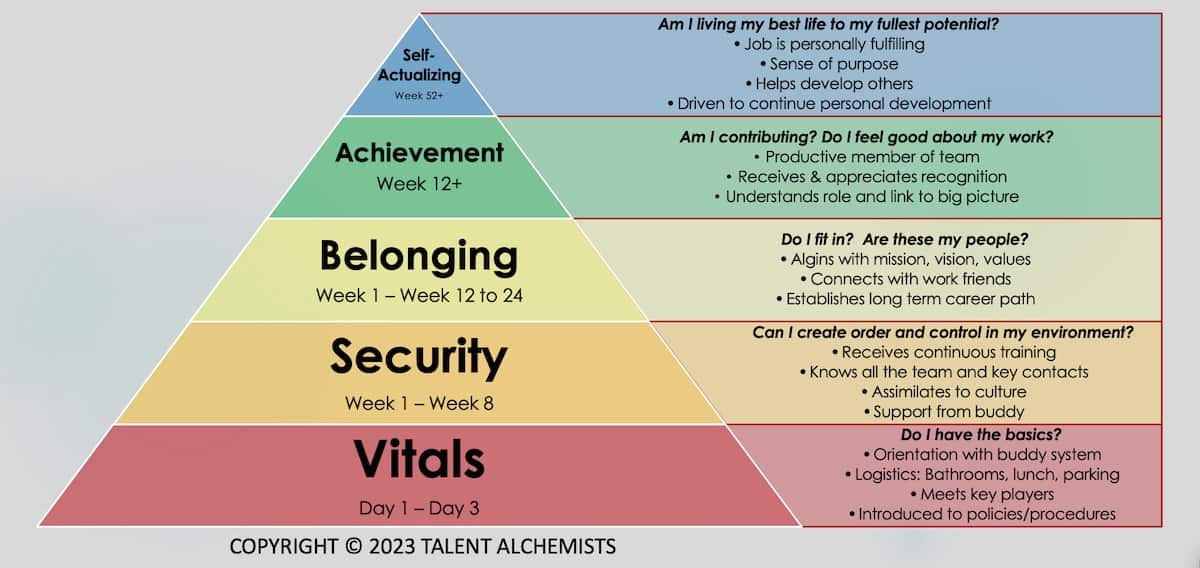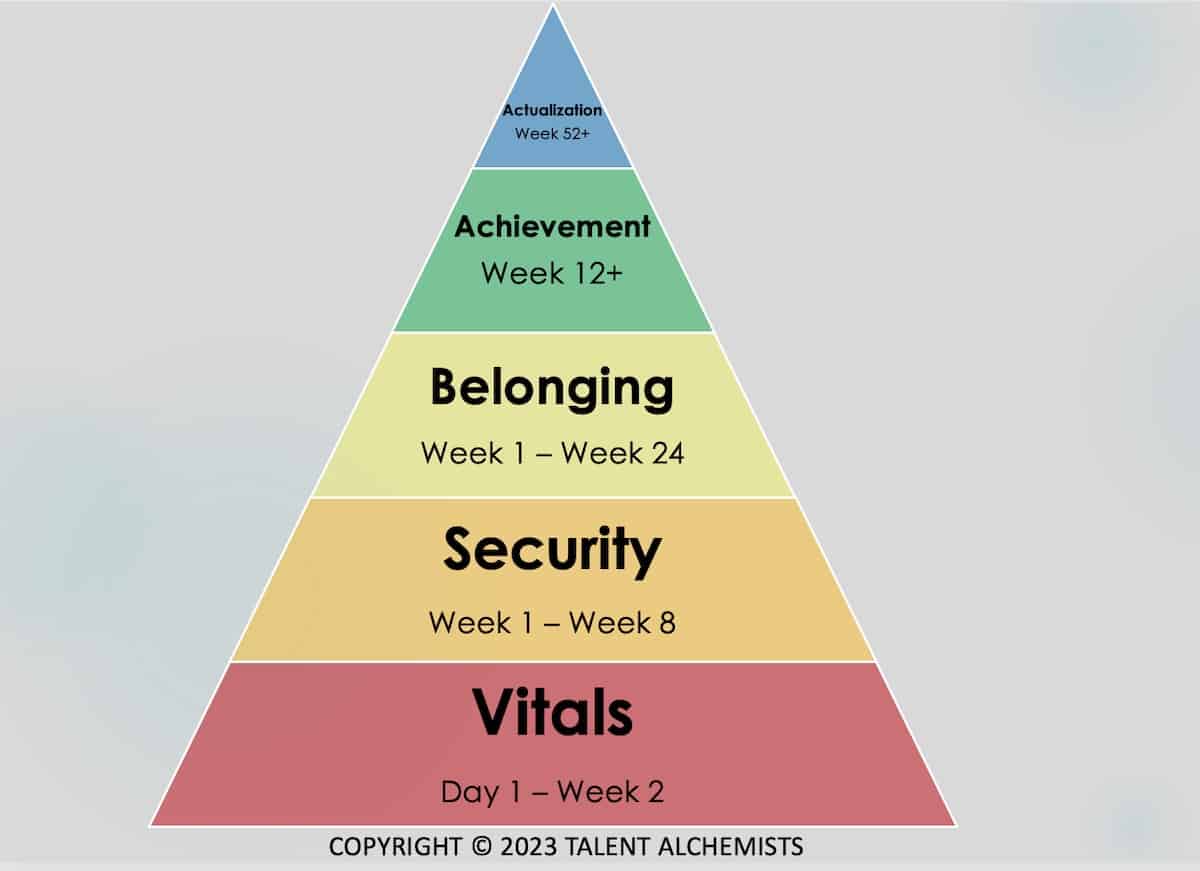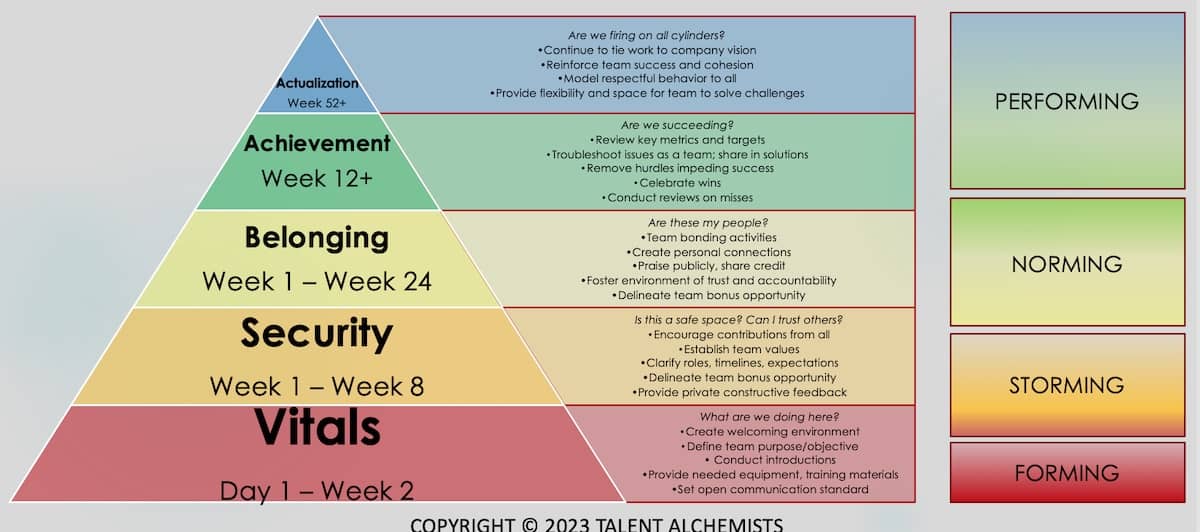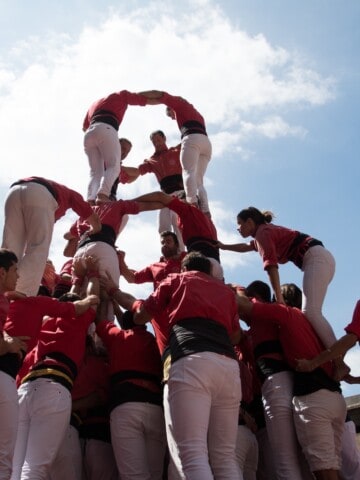Team Actualization = a work group achieving their full potential; a team performing at its absolute best; the pinnacle toward which all team leaders should aspire.

The Concept
You might be thinking, okay, that definition is simple enough, but what is Team Actualization in practice? To answer, let's start with a little background.
Team Actualization is a term I started using to highlight the importance of focusing on a work unit when making decisions. Too often, company leaders devote all of their time and energy ensuring individuals are satisfied... do one-on-one meetings happen regularly, does everyone have a career path outlined, is each employee personally satisfied? This dogged focus on the individual comes at the expense of the entire working unit. (Ever kept a quota-crushing salesperson or brilliant software developer on the team, even though no one could stand working with that person?)
Now, don't get me wrong, taking care of your employees is important, however, it is not the end goal. Engaging employees is only a step toward the summit of team actualization. A team leader must always look through the lens of team dynamics when weighing options and making decisions, "How does this course of action help the team achieve their objectives? Does this decision hinder my team in any way? Am I undermining the trust and belongingness we've developed as a group? Does this employee elevate the unit, making the sum greater than the parts?"
No single employee is greater than the team. Leadership decisions must benefit the unit and not just individuals.
Nancy Stewart, Talent Alchemists
The Origins
Where did the term Team Actualization come from? While I'm not sure who first coined the phrase, I do know it isn't used commonly in the business world - yet (I'm working on it!).
Personally, I began to use the phrase after contemplating the use of Maslow's Hierarchy of Needs in the workplace. Maslow's Hierarchy is all about an individual reaching their full potential, a term Maslow called Self Actualization. You can read more about Maslow and his theory here.
Early in my career, I referenced Maslow's hierarchy frequently when creating employee programs. I wanted to ensure employees at my company were engaged, fulfilled, and on a purposeful path. A lofty and admirable goal; one which should continue to be part of an "actualized team" culture. In other words, don't abandon these efforts. You can find more on employee self-actualization in my article on the Employee Journey.

As I continued my leadership journey, I began to see a hole in my logic of building company cultures around individual satisfaction -- most of our work is done in teams. By creating a culture, and related programs, geared toward the "self actualization" of each employee, I was neglecting to consider the success of the work unit. Thus, my pivot to focus on a team's achievement of their full potential and the beginning of my Team Actualization campaign.
The Details
Alright, let's dive into those details of team actualization in practice. Like the employee journey to self actualization, Team Actualization has a similar path. A team must satisfy basic needs before moving up a level in the pyramid. Each level of the hierarchy creates a foundation for the level above. A company, through its leaders, should focus on activities relevant to each phase of the team journey, thereby creating a solid foundation for upward movement.
A quick note on the phases below; while these are written as distinct stages, there is overlap between activities (see the time line in the pyramid below). As well, a team can move up and down the pyramid depending on circumstances, leadership, and dynamics.

Vitals Phase
The first stage is fairly short while employees assess the basics of their new team; are their vital needs met? This is when a team is initially formed or new members are added. Some may be familiar with the term "forming" which is the first stage of group development proposed by psychologist Bruce Tuckman in 1965.
During this phase, leaders should focus on providing team members concrete information that convey team members have all the needed tools and data to do their job. In Maslow's hierarchy, this is the physiological stage; the phase in which humans need the satisfy the vital necessities of air, water, food, and shelter. For a team, members need to know who the players are, what equipment and tools are available to them, the logistics of the job (e.g., schedule, tasks) -- these are the bare essentials which signal to an employee they can remain an active team participant.
Security Phase
With the basics sorted, the next phase is all about security, specifically, safety and trust. Leaders need to create a team culture where people are comfortable speaking up, they aren't penalized for trying new ideas, and they aren't stuck in a quagmire of office politics. This is achieved through clear systems and procedures. In addition to project plan details, the rules of engagement amongst team members needs to be established and agreed up by all.
In group development theory, this is primarily the storming phase with some transition occurring to the norming phase.
Belonging Phase
Bonding is critical to employee and team success. A Harvard Business Review study suggests that a high sense of belonging leads to a 56% increase in job performance, along with other positive outcomes. Connection is part and parcel to being human, encoded into our DNA for survival.
Leaders need to recognize this human need and foster an environment that creates a sense of belonging. This is a good stage to introduce a team bonus for successful outcomes, as well as to double-down on group activities.
At this phase, the group has settled into the 'norming' stage of development.
Achievement Phase
At this stage, the team is in a groove. Milestones are being hit, problems are getting solved. The team is firmly in the "performing" phase of group development.
While work is mostly smooth sailing, there are still kinks in processes that are being sorted. Leaders may be assessing if all the right players are in the right place. The team is on solid ground with a bit more time and polish needed to hit their ultimate stride.
Team Actualization Phase
The Summit! The team has reached their full potential and is firing on all cylinders. How do you know when the unit has achieved this state? Here are a few telltale signs:
- The team is identifying and solving issues with minimal leadership input
- They are eager to tackle more, to find better solutions, to discover more efficient ways to operate; they go above and beyond what was asked of them in search of enhancements
- The group recognizes their impact on the company and lends their knowledge and skills to analogous problems facing the organization
- New members are quickly assimilated into the group by team members, without prompting from leaders
- The air of respect and connection on the team is palpable; it's contagious and spreads to other employees in the organization
Remember, teams can move up and down the hierarchy. It is normal to hit the summit and then take a step back. That's okay. As a leader, be vigilant to these shifts and adjust accordingly.

The good news & the bad news
Here is the super cool thing about team actualization -- achievement is entirely in the hands of leadership. (By the way, that is also the bad news.) The team leader has the ability to develop a culture that begets success, embraces trust, creates belonging. Unlike self actualization, which is ultimately up to the employee to attain, team actualization is solely influenced by leadership decisions, communication, and management style.
A team's ability to reach their full potential is 100% the responsibility of leadership. The team's success or failure is a mirror of the team leader.
Nancy Stewart, Talent Alchemists
And, one more piece of good news.... attaining team actualization isn't rocket science. It's a formula knowledge + discipline + courage, all of which can be honed and attained.
Talent Alchemists is ready to assist in your success.




